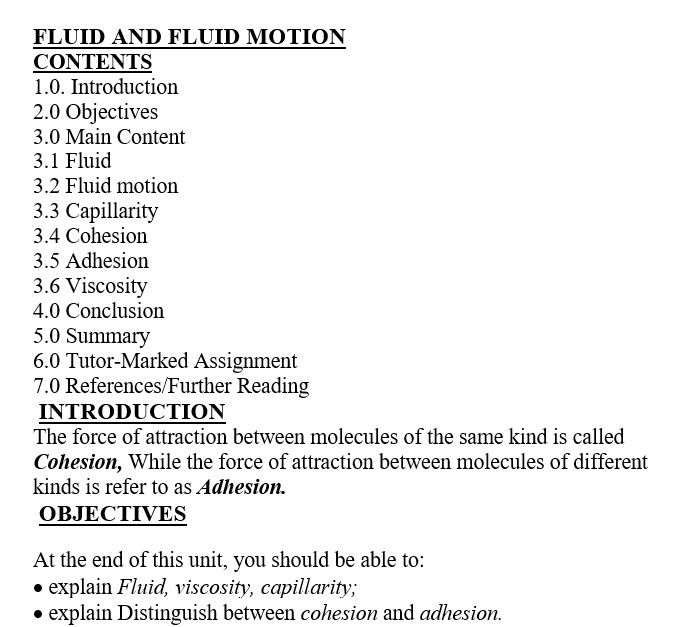Fluid and Fluid Motion
Summary:
This document provides an overview of fluid and fluid motion, particularly emphasising the phenomena of cohesion, adhesion, capillarity, and viscosity. Fluids, comprised of liquids and gases, are characterized by their freedom of molecular movement, unlike solids. This enables them to flow and respond differently to forces. Cohesion refers to the force of attraction between identical molecules, like water molecules, while adhesion is the force between different molecules, such as water and glass. These forces account for capillarity, the tendency of liquids to rise or fall in narrow tubes, evidenced in experiments with water and mercury. The meniscus curvature varies with the nature of the fluid and tube material, upward for water and downward for mercury. Viscosity is defined as the internal friction between fluid layers in motion, explaining the varied ease of pouring different liquids. Understanding these concepts gives insight into the properties and behaviour of fluids.
Excerpt:
FLUID AND FLUID MOTION
CONTENTS
1.0. Introduction
2.0 Objectives
3.0 Main Content
3.1 Fluid
3.2 Fluid motion
3.3 Capillarity
3.4 Cohesion
3.5 Adhesion
3.6 Viscosity
4.0 Conclusion
5.0 Summary
6.0 Tutor-Marked Assignment
7.0 References/Further Reading
INTRODUCTION
The force of attraction between molecules of the same kind is called Cohesion, While the force of attraction between molecules of different kinds is referred to as Adhesion.
OBJECTIVES
At the end of this unit, you should be able to:
- explain Fluid, viscosity, and capillarity;
- explain and Distinguish between cohesion and adhesion.
3.0 MAIN CONTENT
- Fluid
Molecules Liquids and gases are freer to move than those solids; as such, both can flow. Consequently, they are grouped together as fluids. They have no rigid shape, and their response to forces differs from that of solids.
- Fluid motion
In an experiment performed, it was observed that when three tubes with fine bores but with different diameters were dipped into clean water, the water raised in the tubes, but the narrower the bore, the higher the height to which the water rises.


Reviews